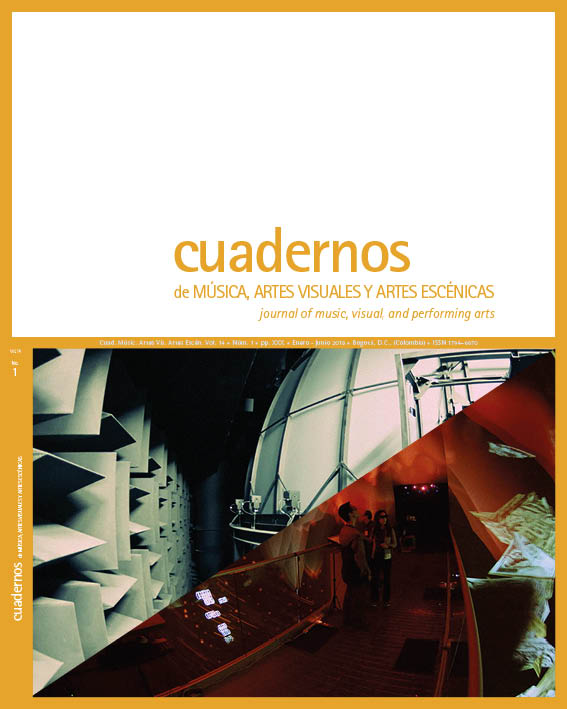Abstract
En este artículo de Pauline Oliveros, originalmente concebido como discurso de apertura de la conferencia «Powering Up/Powering Down» llevada a cabo en el año 2004 en la universidad de California en San Diego, la autora reflexiona sobre el futuro de la música con motivo del vertiginoso avance tecnológico que promete el siglo XXI, y que, según algunos círculos científicos, desembocará en el advenimiento de la Singularidad tecnológica, esto es, en la completa fusión entre tecnología e inteligencia humana. ¿Cuál será el lugar de la tecnología en el ámbito musical al finalizar el siglo XXI? ¿Quién escuchará e interpretará esta música? ¿Qué papel tendrá el cuerpo en la creación, interpretación y percepción musical? Estas son algunas de las cuestiones que aborda la compositora a través de un recuento de su amplia trayectoria. Oliveros presenció y participó activamente en la importante transformación que vivió la historia de la música con el desarrollo de la electricidad a lo largo del siglo XX, y en este artículo reflexiona y problematiza los posibles cambios trascendentales que traerá el avance de la tecnología digital en la época actual. Para finalizar, invita a que el desarrollo tecnológico se centre en la extensión corporal para alcanzar formas inéditas de interpretación y creación en la improvisación musical.
30 de julio de 2004. http://www.villagevoice.com/issues/0331/baard.php.
“Max/MSP Overview”. 2004. Consultado: el 30 de julio de 2004. http://www.cycling74.com/products/
maxmsp_2.html.
Missin, Pat. 2002. “A Brief History of Mouth Blown Free Reed Instruments”. Consultado: el 30 de julio de
2004. http://www.patmissin.com/history/history.html.
— 2003. “Eastern Free Reed Instruments: Mouth Organs with Circular Arrangement of Pipes”. Consultado:
el 30 de julio de 2004. http://www.patmissin.com/history/eastern.html.
Mullin, John. 1996. “John (Jack) T. Mullin (1913-99) Recalls the American Development of the Tape
Recorder”. Consultado: el 30 de julio de 2004. http://www.kcmetro.cc.mo.us/pennvalley/biology/
lewis/crosby/mullin.htm
Oliveros, Pauline. 1984. “Tape Delay Techniques for Electronic Music Composers”. En Software for People:
Collected Essays 1962-1981, 36-46. Baltimore: Smith Publications.
Sandberg, Anders. 2000a. “ Transhuman Terminology Sub-Page, P”. Consultado: el 30 de julio de 2004.
http://www.aleph.se/Trans/Words/p.html.
— 2000b. “Transhuman Terminology Subpage, T”. Consultado: el 30 de julio de 2004. http://www.aleph.
se/Trans/Words/t.html.
Toth, Nicholas y Kathy Schick. “Stone Age”. Microsoft7 Encarta7 Online Encyclopedia. Consultado: el 4 de
agosto de 2004. http://encarta.msn.com.
This journal is registered under a Creative Commons Attribution 4.0 International Public License. Thus, this work may be reproduced, distributed, and publicly shared in digital format, as long as the names of the authors and Pontificia Universidad Javeriana are acknowledged. Others are allowed to quote, adapt, transform, auto-archive, republish, and create based on this material, for any purpose, provided the authorship is duly acknowledged, a link to the original work is provided, and it is specified if changes have been made. Pontificia Universidad Javeriana does not hold the rights of published works and the authors are solely responsible for the contents of their works; they keep the moral, intellectual, privacy, and publicity rights.
Approving the intervention of the work (review, copy-editing, translation, layout) and the following outreach, are granted through an use license and not through an assignment of rights. This means the journal and Pontificia Universidad Javeriana cannot be held responsible for any ethical malpractice by the authors. As a consequence of the protection granted by the use license, the journal is able to publish retractions or to correct information already published. Publishing contents in this journal does not generate royalties for contributors.


